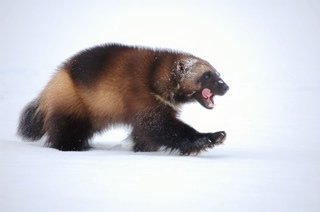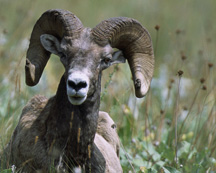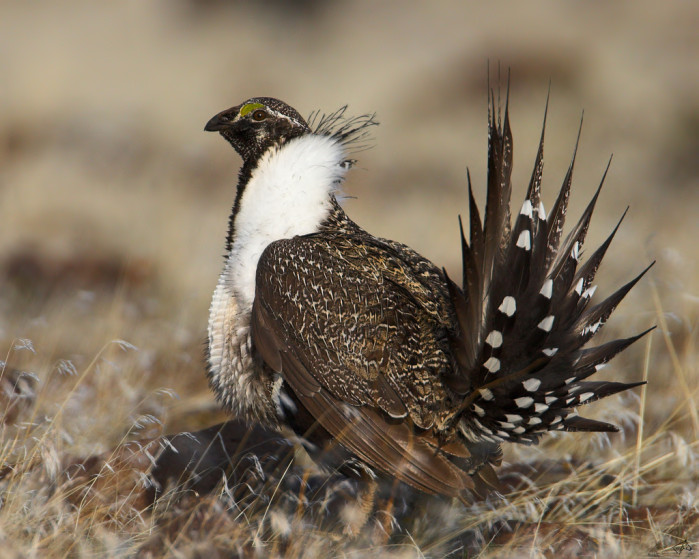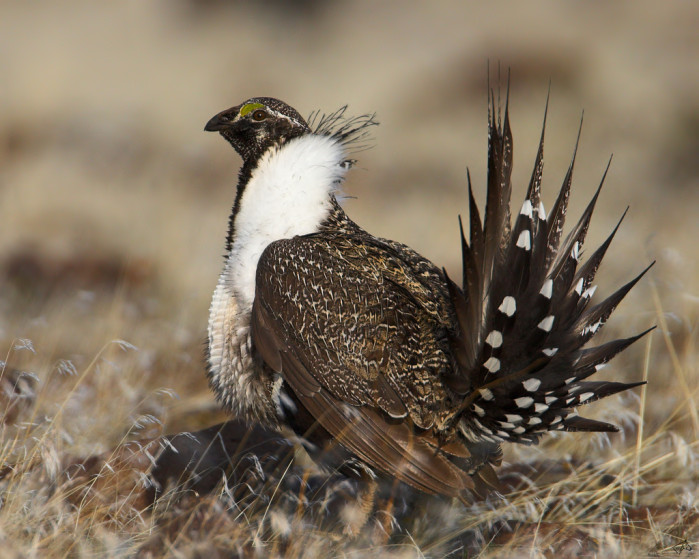Please note the revision to the earlier version of this post. Changes are in blue.
About a month ago, according to the New York Times, top state wildlife agency officials in Nevada, Colorado, Idaho and Wyoming asked the Bureau of Land Management (BLM) to take the lead in coordinating efforts to conserve the remaining greater sage grouse population, since more than half of the greater sage grouse’s remaining habitat is on BLM land. (Read the NYT article here.)
At the Western Association of Fish and Wildlife Agencies’ summer conference earlier this month, BLM more or less agreed to that role, saying that, “In response to requests from state and local governments to facilitate ways to conserve greater sage-grouse and protect its habitat” it is putting together a strategy for greater sage grouse conservation that will emphasize partnerships and agreements between stakeholders. (Read the BLM announcement here.)
The BLM’s announcement breaks greater sage grouse habitat into two sections: an eastern section where the biggest threat is energy development (oil, gas and wind) and a western section where the greatest threats are invasive species (which other sources say is primarily cheatgrass), and wildfires. (Read the further info on the plan provided by BLM here.)
The NY Times article says that the BLM plan uses Wyoming’s “core area” strategy as its base. This strategy says that only five percent of the land can be developed within four miles of a known greater sage grouse lek (or breeding area). (Read Land Letter’s article on Wyoming’s “core area” strategy here.) And yes, that restricts development on some 15 million acres in Wyoming.
A BLM spokeswoman said that it is more accurate to say that the BLM plan is “informed” by the Wyoming plan. Different strategies will be put in place in different locations, depending on on-the-ground factors. She says that the strategy is a framework, not a document. The specifics are still evolving.
Read the articles, including this one in the Sacramento Bee, for more info on the greater sage grouse’s bid for listing under the Endangered Species Act (it was deemed warranted but precluded, which is now known, confusingly, as being a “candidate” species) and how the continued threat of its listing is driving this conservation activity.
Check out these articles from WyoFile, which give a lot more detail than was available when we first posted this news:
An article about Wyoming’s management plan.
An article about whether or not sage grouse will be listed as endangered species.
Photo: Greater sage grouse by Stephen Ting. Courtesy US Fish and Wildlife Service.
 Before recent research on wolverines in the greater Yellowstone region, not much was known about these predators, says an article in the Billings Gazette. To wrap up the eight-year project, the article says, the research team, lead by Bob Inman of the Wildlife Conservation Society, has published an article in the Journal of Wildlife Management.
Before recent research on wolverines in the greater Yellowstone region, not much was known about these predators, says an article in the Billings Gazette. To wrap up the eight-year project, the article says, the research team, lead by Bob Inman of the Wildlife Conservation Society, has published an article in the Journal of Wildlife Management.


